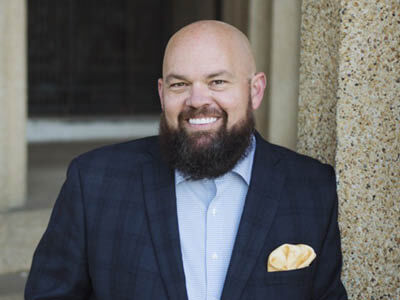AP Decision Notes: What to expect in Arizona's special congressional election
News > Politics & Government News

Audio By Carbonatix
7:48 AM on Friday, September 19
By ROBERT YOON
WASHINGTON (AP) — Voters in southern Arizona will send a new representative to Congress after Tuesday’s special election to replace the late Democratic U.S. Rep. Raúl Grijalva, who died in March of complications from cancer treatment.
The winner will serve out the remaining 15 months of Grijalva’s term in the 7th Congressional District, which stretches from Yuma to Tucson and hugs almost the entire length of Arizona’s border with Mexico.
The seat will not decide control of the U.S. House, but it is one of two remaining vacancies in heavily Democratic districts that could chip away at Republicans’ slender 219-213 majority in the chamber. A third vacancy in a heavily Republican Tennessee district won’t be filled until December.
The major contenders to replace Grijalva are former Democratic Pima County Supervisor Adelita Grijalva, daughter of the late congressman, and Republican nominee Daniel Butierez, a contractor and small business owner. Two third-party candidates are also on the ballot.
Adelita Grijalva won the five-way Democratic primary in July with about 62% of the vote, buoyed by endorsements from the state’s two Democratic U.S. senators and from Sen. Bernie Sanders, an independent from Vermont who caucuses with Democrats, and Rep. Alexandria Ocasio-Cortez, D-N.Y., key figures in the party’s progressive wing.
Her closest competition was social media influencer and progressive activist Deja Foxx, who received about 22% of the vote.
In the Republican primary, Butierez performed about as well as Grijalva did in her contest, with about 61% of the vote over restaurant owner Jorge Rivas and businessman Jimmy Rodriguez. Butierez received about 37% of the vote as the Republican nominee against Raúl Grijalva in 2024, while Donald Trump retook Arizona at the top of the ballot.
Adelita Grijalva has a sizable financial advantage over Butierez. She has raised $1.3 million for her abbreviated campaign, including for the contested July special primary, and began the final three-week stretch of the race with about $109,000 in the bank. Butierez has raised about $72,000 in contributions this year and has loaned his campaign an additional $136,000. He began the month with about $60,000 in the bank.
The majority-Hispanic 7th District includes parts of six counties, including the state’s three most populous: Maricopa, Pima and Pinal. While Maricopa often plays a pivotal role in statewide elections, in the 7th District, it takes a backseat to Pima, which contributes more than 60% of the district’s registered voters. After Pima County, Maricopa and Yuma counties offer the most possible votes in the district, followed by Santa Cruz County.
Democrats enjoy a nearly 2-1 ratio registration advantage over Republicans, both districtwide and in five of the district’s six counties. Republicans outnumber Democrats in the small corner of Pinal County that falls within district boundaries.
Democratic presidential nominee Kamala Harris carried the district in 2024 with about 61% of the vote, compared to 38% for Trump. At the county level, Harris had her strongest showing in Pima with about 64% of the vote and squeaked by with 50% of the vote in Yuma. Trump received 66% in Pinal, although the county comprised less than 1% of the total district vote.
Raúl Grijalva represented this stretch of southern Arizona since he first took office in 2003. Most of the current 7th District has been represented by Democrats in Congress since Arizona first became a state in 1912. This includes a 36-year stretch when the area was part of the 2nd Congressional District and was represented either by longtime Democratic U.S. Rep. Mo Udall or his brother, Stewart Udall.
The Associated Press does not make projections and will declare a winner only when it’s determined there is no scenario that would allow the trailing candidates to close the gap. If a race has not been called, the AP will continue to cover any newsworthy developments, such as candidate concessions or declarations of victory. In doing so, the AP will make clear that it has not yet declared a winner and explain why.
In Arizona, recounts are automatic if the vote margin is 0.5% of the total vote or less. The AP may declare a winner in a race that’s eligible for a recount if it can determine the lead is too large for a recount or legal challenge to change the outcome.
Here’s a look at what to expect Tuesday:
The special election for Arizona’s 7th Congressional District will be held Tuesday. Polls close districtwide at 7 p.m. local time, which is 10 p.m. ET. No results will be released before 11 p.m. ET. Most of Arizona does not observe daylight saving time.
The AP will provide vote results and declare a winner in the congressional special election.
Any voter registered in the 7th Congressional District may participate in the special election.
As of Aug. 25, there were more than 478,000 voters registered in the 7th District, including both active and inactive voters. Of those, more than 187,000, or 39%, were Democrats, and nearly 99,000, or about 21%, were Republicans. Roughly 184,000 voters were not registered with any party. Nearly 83,000 ballots were cast in the July special primary, about 19% of registered voters.
The 271,000 ballots cast in the 2024 U.S. House general election were about 55% of registered voters. About 77% of voters cast their ballots before Election Day.
In the 2024 presidential election, the AP first reported results in the 7th District at 10 p.m. ET, the earliest time votes were allowed to be released under state law. Tabulation ended for the night at 6:44 a.m. ET with about 55% of total votes counted.
As of Tuesday, there will be 406 days until the 2026 midterm elections.
___
This story has been corrected to show the spelling of the city is Tucson, not Tuscon.
___
Follow the AP’s coverage of the 2025 election at https://apnews.com/projects/election-results-2025/.







